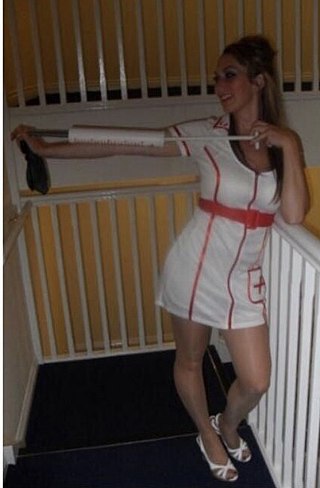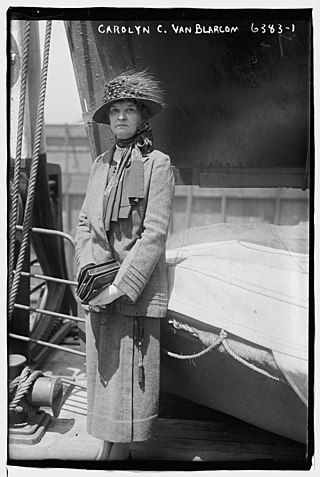Nurse education consists of the theoretical and practical training provided to nurses with the purpose to prepare them for their duties as nursing care professionals. This education is provided to student nurses by experienced nurses and other medical professionals who have qualified or experienced for educational tasks, traditionally in Nursing schools. Most countries offer nurse education courses that can be relevant to general nursing or to specialized areas including mental health nursing, pediatric nursing and post-operatory nursing. Courses leading to autonomous registration as a nurse typically last four years. Nurse education also provides post-qualification courses in specialist subjects within nursing.

A stereotype is a widely held and fixed notion of a specific type of person and is often oversimplified and can be offensive. Stereotypes of people and groups are harmful, especially when they lack factual information. Nursing as a profession has been stereotyped throughout history. The stereotypes given to nursing as well as women in nursing has been well documented. A common misconception is that all nurses are female; this misconception has led to the emergence of another stereotype that male nurses are effeminate. These generalized perceptions of the nursing profession have aided in the misrepresentation of nurses in the media as well as the mischaracterization of nurses in the eyes of the public. The image of a nurse depicted by the media is typically of a female being over-sexualized as well as diminished intellectually. This notion is then portrayed in get-well cards, television, film and books. The over-sexualized nurse is commonly referred to as a naughty nurse and is often seen as a sex symbol or nymphomaniac. Along with these common stereotypes, studies have identified several other popular images used in media such as handmaiden, angel, torturer, homosexual male, alcoholic, buffoon and woman in white. Common stereotypes of nursing and portrayal of these misrepresentations have fueled a discussion on the effects they have on the profession.
Home health nursing is a nursing specialty in which nurses provide multidimensional home care to patients of all ages. Home health care is a cost efficient way to deliver quality care in the convenience of the client's home. Home health nurses create care plans to achieve goals based on the client's diagnosis. These plans can include preventive, therapeutic, and rehabilitative actions. Home health nurses also supervise certified nursing assistants. The professional nursing organization for home health nurses is the Home Healthcare Nurses Association (HHNA). Home health care is intended for clients that are well enough to be discharged home, but still require skilled nursing personnel to assess, initiate and oversee nursing interventions.

Beverly Louise Malone is the chief executive officer of the National League for Nursing in the United States. Prior to assuming this position in February 2007 she served as general secretary of the Royal College of Nursing in the United Kingdom for six years.
Chris Stevenson was an author and professor of mental health nursing at Dublin City University, where she was also head of the School of Nursing. She was appointed in 2005, having begun her career as a psychiatric nurse.
Patient advocacy is a process in health care concerned with advocacy for patients, survivors, and caregivers. The patient advocate may be an individual or an organization, concerned with healthcare standards or with one specific group of disorders. The terms patient advocate and patient advocacy can refer both to individual advocates providing services that organizations also provide, and to organizations whose functions extend to individual patients. Some patient advocates are independent and some work for the organizations that are directly responsible for the patient's care.
Paul F. Clark is an American writer who is professor of labor studies at Pennsylvania State University. He is head of the Department of Labor Studies and Employment Relations. He also holds a professorship in the Department of Health Policy and Administration.

Nursing is a profession within the healthcare sector focused on the care of individuals, families, and communities so they may attain, maintain, or recover optimal health and quality of life. Nurses may be differentiated from other healthcare providers by their approach to patient care, training, and scope of practice. Nurses practice in many specialties with differing levels of prescription authority. Nurses comprise the largest component of most healthcare environments; but there is evidence of international shortages of qualified nurses. Nurses collaborate with other healthcare providers such as physicians, nurse practitioners, physical therapists, and psychologists. Unlike nurse practitioners, nurses typically cannot prescribe medications in the US. Nurse practitioners are nurses with a graduate degree in advanced practice nursing. They practice independently in a variety of settings in more than half of the United States. Since the postwar period, nurse education has undergone a process of diversification towards advanced and specialized credentials, and many of the traditional regulations and provider roles are changing.
Kathy Malloch is an American nurse who is past president and current boardmember of the Arizona Board of Nursing. She is a nursing scholar, writer, software developer and teacher.
Hospice care is a type of health care that focuses on the palliation of a terminally ill patient's pain and symptoms and attending to their emotional and spiritual needs at the end of life. Hospice care prioritizes comfort and quality of life by reducing pain and suffering. Hospice care provides an alternative to therapies focused on life-prolonging measures that may be arduous, likely to cause more symptoms, or are not aligned with a person's goals.
Barbara Bates, MD, MA was an American physician, author and historian. She authored a leading medical textbook on physical examination. Bates was on the faculty at several U.S. medical schools, and she was on both the medical and nursing school faculties at the University of Pennsylvania. She helped to develop the role of the nurse practitioner in American healthcare and she wrote a thorough account on the history of tuberculosis in Pennsylvania.

The history of nursing in the United States focuses on the professionalization of nursing since the Civil War.
Linda H. Aiken, is an American nurse and researcher who is currently the Director for the Center for Health Outcomes and Policy Research and a Senior Fellow of the Leonard Davis Institute for Health Economics. She also is the Claire M. Fagin Leadership Professor of Nursing Science and a professor of Sociology at the University of Pennsylvania, Philadelphia.
Healthcare standards in Qatar are generally high. Qatari citizens are covered by a national health insurance scheme, while expatriates must either receive health insurance from their employers, or in the case of the self-employed, purchase insurance. Qatar's healthcare spending is among the highest in the Middle East, with $4.7 billion being invested in healthcare in 2014. This was a $2.1 billion increase from 2010. The premier healthcare provider in the country is the Hamad Medical Corporation, established by the government as a non-profit healthcare provider, which runs a network of hospitals, an ambulance services, and a home healthcare service, all of which are accredited by the Joint Commission.
Carol Fowler Durham is an American Clinical Professor of Nursing and Doctor of Education who is known as a leader in the fields of Healthcare Quality and Safety, nursing education, interprofessional education, and medical simulation.
Margaret P. Moss, PhD, JD, RN, FAAN, an enrolled member of the Three Affiliated Tribes is Assistant Dean of Diversity and Inclusion/Associate Professor at the University at Buffalo, School of Nursing. She is the first and only American Indian to hold both nursing and juris doctorates. As a RWJF Health Policy Fellow she staffed the US Senate Special Committee on Aging (2008-9) and was lead staff on the now enacted National Alzheimer's Project Act. Moss recently published the first nursing textbook on American Indian health, which won AJN Book of the Year in 2016.
Creative Health Care Management (CHCM) is a private U.S. corporation, which provides consultation and training in the health care sector. CHCM is based in Bloomington, Minnesota. Founded in 1982 by Marie Manthey, it was originally called Creative Nursing Management. The name change to CHCM was in recognition of the systemic nature of change.
Mary Ellen Smith Glasgow is an American nurse, academic, author and researcher. She is a dean of school of nursing, vice provost for research and a professor at Duquesne University.
Harriet Newton Phillips (1819-1901) was an early trained nurse in America, working during and after the Civil War.

Carolyn Conant Van Blarcom was an American nurse and midwife reformer. In 1913 she became the first American nurse to become a licensed midwife. She made pioneering contributions in preventing childhood blindness. Van Blarcom also played instrumental role in establishing a school for midwives, and extensively contributed in reforming some of the important health institutions in America including the Maryland State Sanatorium for Tuberculosis.



